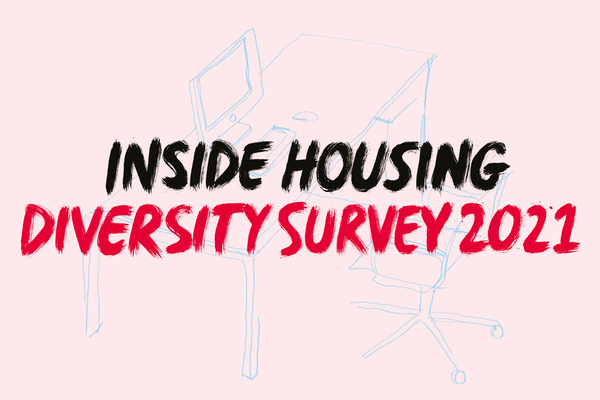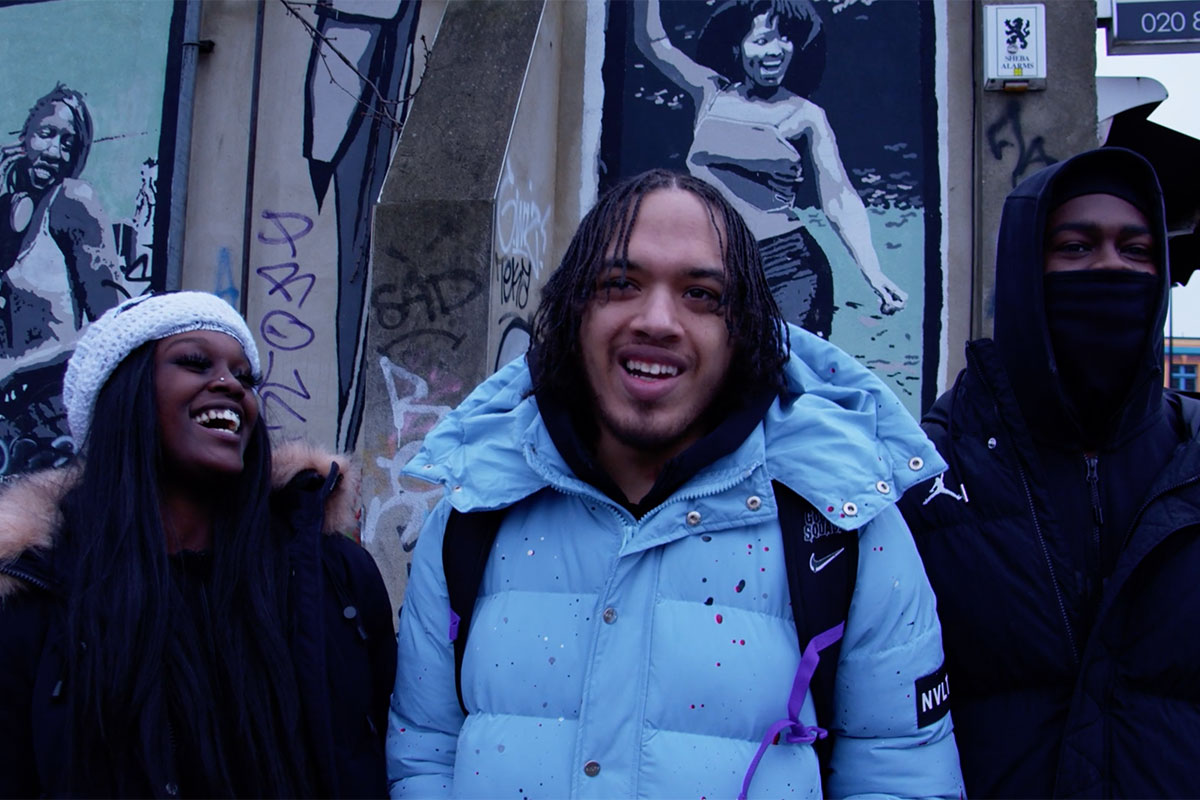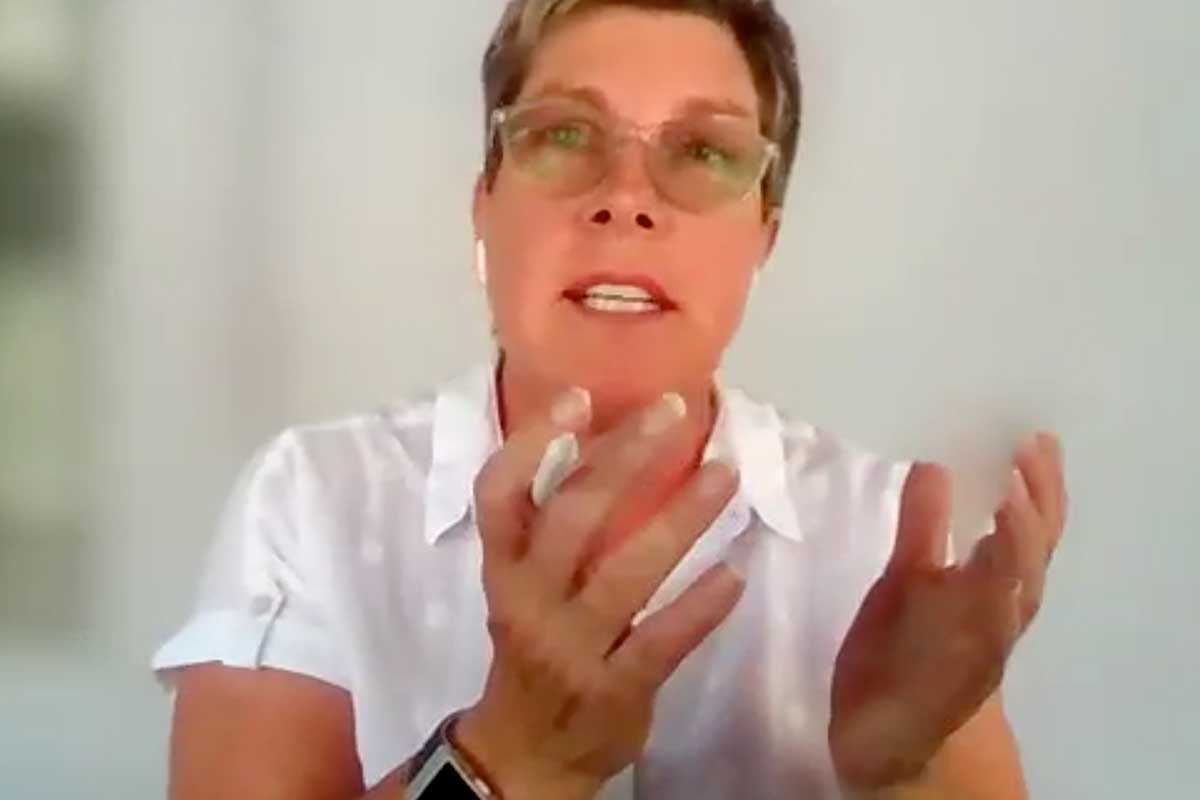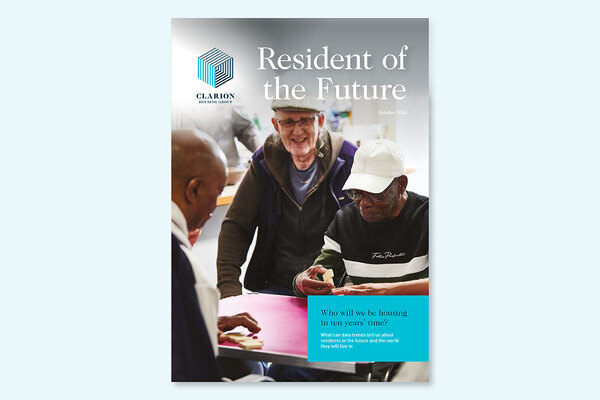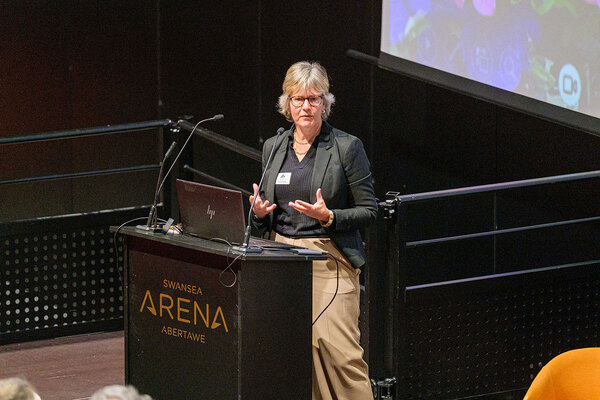How can landlords engage with young residents for diverse and inclusive communities?
Resident feedback can be dominated by the views of older people. How can landlords get better at reflecting the opinions of younger residents? A roundtable explored this. Illustration by Neil Webb
In association with:

In recent years, there has been a shift in emphasis when it comes to one of the most important relationships in the housing sector: the interaction between tenant and landlord.
Following the tragedy at Grenfell Tower, the Social Housing White Paper sought to redress some of the imbalances in this relationship by giving tenants and residents a clearer path for communicating and working with their landlords, particularly around safety issues. For this new type of relationship to work, however, landlords will have to reach all parts of the communities in which they work, including the often hard-to-reach cohort of young people.
Inside Housing hosted a roundtable, chaired by editor Martin Hilditch and sponsored by Aico, to find out how landlords are addressing this.
Meaningful engagement
Young people often have a poor view of landlords, particularly if they have previously rented in the private sector, which presents an obstacle for social landlords.
“For myself and a lot of other young people, our experience of landlords and engagement with landlords has been coloured somewhat by our experience in the private rented sector,” explains Alex Cirant-Taljaard, a Sovereign resident and member of its youth panel. “Our negative experiences within that lead to a distrustful relationship between young people and landlords, which can be quite challenging, even for social landlords, to overcome. The way that [is overcome] is with genuine, meaningful engagement.”
Mandeep Bhogil, fire safety business lead and operations manager at Home Group, agrees but adds that the difficult relationship can persist in the social housing sector. “Young people don’t always see themselves as having a responsibility or accountability to their landlord. When landlords don’t actively seek to engage with young people, that can lead to young people railing against their landlord rather than seeing them as a supportive organisation... to work with.”
There is a consensus among participants that landlords need to find ways to create that meaningful engagement, but it can be easier said than done.
Alan Strickland, director of external affairs and resident involvement at G15 association Optivo, says that sector leaders must do three things to make sure more young people get involved: make it a genuine priority at board and executive level; examine internal culture around engagement; and make sure the terms of engagement are co-created with residents.
One significant change landlords can make to their culture, he says, is to use online tools to adapt how, where and when meetings happen, to attract new voices.
“We’ve all had to move stuff online because of COVID-19 [and] there can be an instinct to do what we did in person, but on Zoom,” he elaborates. “This is a real opportunity to do things differently. Online engagement can give us the opportunity to change the culture – to make it more flexible and more dynamic. That feels like something we really need to grab.”
Mr Strickland tells participants how Optivo’s adoption of online meetings has already “attracted some younger residents”, including one who joined from a bus and another young mother who took part “with a baby under her arm” while cooking dinner.
Michael Hill, business development manager at Tpas, the tenant engagement organisation, echoes this point, arguing that landlords need to reach out to all residents, rather than expect residents to come to them.
Inclusion
Picking up on the theme of how to build trust, Alys Exley-Smith, community relations manager at Lewisham Homes, says that any marginalised groups of residents – such as young people – need to feel included before they will feel comfortable talking to landlords about issues such as safety.
“I think, before we engage and bring people into the conversation about social housing, we need them to feel part of the social housing community,” she suggests. “Often if there’s a group of young people standing outside a block, [people think] they’re up to no good – we need to get over those sort of perceptions to actually bring young people into the community.”
Lewisham Homes has used what Ms Exley-Smith calls the co-production model to start conversations with younger residents. She says the process of co-production involves listening to young people first and “reducing the barriers” to engagement by doing so.
“Ultimately, their first priority isn’t talking to a housing association about health and safety, or it’s unlikely to be,” she explains. “So it’s about understanding what the barriers are to engagement and finding ways to overcome those barriers.”
Verity Darbyshire, customer engagement advisor at Orbit, says co-production and co-creation have to be bottom-up processes if they are to work. She explains how Orbit has used the method to improve its complaints process. “We get [residents’] input from the very start so they have a say in whatever policy or process we’re talking about.”
For Tina Mistry, relationships manager at Aico, co-production also means going into communities to understand what their concerns are, rather than sending out surveys or questionnaires. Having previously worked in the arts and culture sector at Coventry City Council, she compares social landlords’ tenant engagement work with the audience development work she once did.
“It was about going out and getting stories from the community,” she recalls. “It’s not engagement; it’s interaction with human beings. We forget that and put a label on it. It’s about identifying the audience and the things they actually engage with. Audience development in arts and culture is way ahead of us and we have to look at what they’re doing and bring it back here.”
Colette McKune, chief executive at ForHousing, says tenant safety is her top priority. She is proud of the engagement the association has had with tenants over fire safety and sprinkler installation, but she does not know the age range of those residents who have engaged. “That’s a challenge for me,” she admits. “We need to include everybody.”
Ms McKune shares the concerns of others in the discussion that engagement on issues such as safety produces nothing if it does not help develop trust between landlords and tenants. That trust, she adds, can only be won if engagement leads to action.
“There’s no point in seeking engagement if you don’t do something with it, and in a timely manner,” she continues. “And then you also have to tell people you’ve done it because we’re not at the forefront of their world. A lot of time is taken up with consulting and then doing what you planned anyway, but you’ve ticked the box of consulting. People aren’t stupid – they’ll see that. So if you are going to truly engage, for example with decarbonisation, there’s no point in consulting with tenants six weeks before you put an air source heat pump in.”

Location, location, location
Another theme to emerge from the discussion was that landlords need to think more about where, as well as how, to engage with younger residents.
Ian Haworth, neighbourhood services director at Swan, admits his association has been trying to engage with a wider group of residents but has had to concede that “we weren’t reaching everyone we wanted to reach”.
“We picked up that young people don’t have the opportunity to influence the way some other people do, and we’re really missing a trick.”
To address the problem, Swan “looked at participation models” and found that younger people “felt unwelcome” in some of the traditional places where engagement has taken place. “We found younger residents were less likely to attend meetings in community facilities, especially when these meetings had been established for a number of years,” Mr Haworth says. “However, they were happy to give their views when we reached out to them electronically.”
Reverend James Olanipekun, a resident ambassador at Poplar Harca and a member of the National Housing Federation’s tenant advisory panel, agrees that “the space is the key” when it comes to reaching younger people – “whether it’s social media or a physical space”. He says organisations need to go to the right spaces and listen to what the people there are interested in. “Otherwise, we’ll be missing out on youth involvement.”
Rev Olanipekun says that associations should think imaginatively about where to go to engage people they have traditionally been bad at reaching, using the example of chicken shops as a place where young people may feel more at home. He thinks the way to reach young people is to adopt what he calls “the kindness approach”: “When you are kind, you listen. When you are kind, you are flexible. When you are kind, you are not overly prescriptive. And that will help, because all we are saying now boils down to being kind.”
Participants
Martin Hilditch (chair)
Editor, Inside Housing
Mandeep Bhogil
Fire safety business lead and operations manager, Home Group
Alex Cirant-Taljaard
Resident and youth panel member, Sovereign
Verity Darbyshire
Customer engagement advisor, Orbit
Alys Exley-Smith
Community relations manager, Lewisham Homes
Sarah Fordham
Communities manager, Sovereign
Ian Haworth
Neighbourhood services director, Swan
Michael Hill
Business development manager, Tpas
Colette McKune
Chief executive, ForHousing
Tina Mistry
Relationships manager, Aico
Reverend James Olanipekun
Resident ambassador, Poplar Harca, and tenant advisory panel member, National Housing Federation
Alan Strickland
Director of external affairs and resident involvement, Optivo

